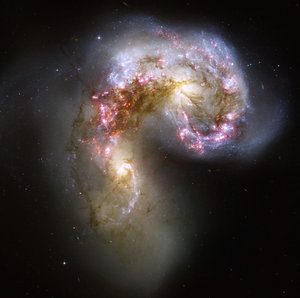Accept all cookies Accept only essential cookies See our Cookie Notice

About ESA
The European Space Agency (ESA) is Europe’s gateway to space. Its mission is to shape the development of Europe’s space capability and ensure that investment in space continues to deliver benefits to the citizens of Europe and the world.
Highlights
ESA - United space in Europe
This is ESA ESA facts Member States & Cooperating States Funding Director General Top management For Member State Delegations European vision European Space Policy ESA & EU Space Councils Responsibility & Sustainability Annual Report Calendar of meetings Corporate newsEstablishments & sites
ESA Headquarters ESA ESTEC ESA ESOC ESA ESRIN ESA EAC ESA ESAC Europe's Spaceport ESA ESEC ESA ECSAT Brussels Office Washington OfficeWorking with ESA
Business with ESA ESA Commercialisation Gateway Law at ESA Careers Cyber resilience at ESA IT at ESA Newsroom Partnerships Merchandising Licence Education Open Space Innovation Platform Integrity and Reporting Administrative Tribunal Health and SafetyMore about ESA
History ESA Historical Archives Exhibitions Publications Art & Culture ESA Merchandise Kids Diversity ESA Brand Centre ESA ChampionsLatest
Space in Member States
Find out more about space activities in our 23 Member States, and understand how ESA works together with their national agencies, institutions and organisations.
Science & Exploration
Exploring our Solar System and unlocking the secrets of the Universe
Go to topicAstronauts
Missions
Juice Euclid Webb Solar Orbiter BepiColombo Gaia ExoMars Cheops Exoplanet missions More missionsActivities
International Space Station Orion service module Gateway Concordia Caves & Pangaea BenefitsLatest
Space Safety
Protecting life and infrastructure on Earth and in orbit
Go to topicAsteroids
Asteroids and Planetary Defence Asteroid danger explained Flyeye telescope: asteroid detection Hera mission: asteroid deflection Near-Earth Object Coordination CentreSpace junk
About space debris Space debris by the numbers Space Environment Report In space refuelling, refurbishing and removingSafety from space
Clean Space ecodesign Zero Debris Technologies Space for Earth Supporting Sustainable DevelopmentLatest
Applications
Using space to benefit citizens and meet future challenges on Earth
Go to topicObserving the Earth
Observing the Earth Future EO Copernicus Meteorology Space for our climate Satellite missionsCommercialisation
ESA Commercialisation Gateway Open Space Innovation Platform Business Incubation ESA Space SolutionsLatest
Enabling & Support
Making space accessible and developing the technologies for the future
Go to topicBuilding missions
Space Engineering and Technology Test centre Laboratories Concurrent Design Facility Preparing for the future Shaping the Future Discovery and Preparation Advanced Concepts TeamSpace transportation
Space Transportation Ariane Vega Space Rider Future space transportation Boost! Europe's Spaceport Launches from Europe's Spaceport from 2012
Distant and ancient
Thank you for liking
You have already liked this page, you can only like it once!
Dotted across the sky in the constellation of Pictor (The Painter’s Easel) is the galaxy cluster highlighted here by the NASA/ESA Hubble Space Telescope: SPT-CL J0615-5746, or SPT0615 for short. First discovered by the South Pole Telescope less than a decade ago, SPT0615 is exceptional among the myriad clusters so far catalogued in our map of the Universe — it is the highest-redshift cluster for which a full, strong lens model is published.
SPT0615 is a massive cluster of galaxies, one of the farthest observed to cause gravitational lensing. Gravitational lensing occurs when light from a background object is deflected around mass between the object and the observer. Among the identified background objects, there is SPT0615-JD, a galaxy that is thought to have emerged just 500 million years after the Big Bang. This puts it among the very earliest structures to form in the Universe. It is also the farthest galaxy ever imaged by means of gravitational lensing.
Just as ancient paintings can tell us about the period of history in which they were painted, so too can ancient galaxies tell us about the era of the Universe in which they existed. To learn about cosmological history, astronomers explore the most distant reaches of the Universe, probing ever further out into the cosmos. The light from distant objects travels to us from so far away that it takes an immensely long time to reach us, meaning that it carries information from the past — information about the time at which it was emitted.
By studying such distant objects, astronomers are continuing to fill the gaps in our picture of what the very early Universe looked like, and uncover more about how it evolved into its current state.
-
CREDIT
ESA/Hubble & NASA, I. Karachentsev et al., F. High et al.CC BY 4.0 -
LICENCE
CC BY 4.0 INT or ESA Standard Licence
(content can be used under either licence)

Hubble's view of the Antennae galaxies

Galaxy cluster SPT-CL J0615−5746 (cropped)

Galaxy cluster SPT-CL J0615−5746 (wide-field view)

Star clusters in the Cosmic Gems arc (annotated)















 Germany
Germany
 Austria
Austria
 Belgium
Belgium
 Denmark
Denmark
 Spain
Spain
 Estonia
Estonia
 Finland
Finland
 France
France
 Greece
Greece
 Hungary
Hungary
 Ireland
Ireland
 Italy
Italy
 Luxembourg
Luxembourg
 Norway
Norway
 The Netherlands
The Netherlands
 Poland
Poland
 Portugal
Portugal
 Czechia
Czechia
 Romania
Romania
 United Kingdom
United Kingdom
 Slovenia
Slovenia
 Sweden
Sweden
 Switzerland
Switzerland
























